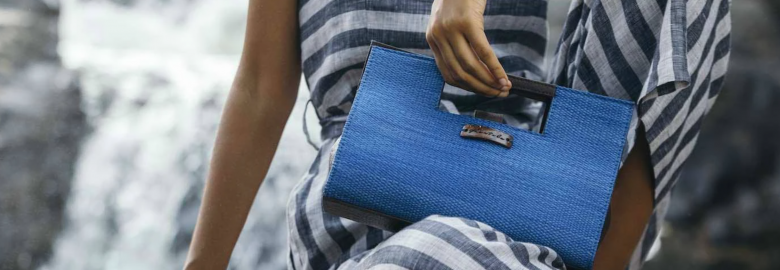Kantala
Vegan fashion accessories from Sri Lanka
Vegan fashion accessories promoting one of Sri Lanka’s oldest weaving techniques and empowering artisans across the country.
Just “Vegan” Isn’t Good Enough
With three “World Days”, June is an important month for celebrating our environment. At Kantala we are always passionate about the environment, constantly thinking of how our decisions and actions affect it. That’s why when we decided to make vegan handbags, we didn’t take the easy route of using synthetic leather (also known as faux leather, pleather etc.) but searched for the right kind of material that protected the environment.
Growth in Vegan Fashion
Cow hides are the staple leather used throughout the world and is well noted for the environmental damage it causes from deforestation, methane gas release, chrome treatment to the cruelty of killing an animal for an item of fashion. The growing interest in vegan fashion items is therefore highly commendable.

This growing interest in consumers and the emergence of brands with ethical values has seen the growth in vegan fashion and consequently growth in demand for vegan leather. The global vegan leather market is expected to hit US$ 89.6 billion by 2025.
The Wrong Kind of Vegan Leather
In an attempt to retain the look, feel and functionality of animal leather, the market has turned to synthetic leathers which are also cheap and scalable. In 2019, the synthetic leather market was valued at US$ 29.2 billion and is forecasted to grow to US$ 52.96 billion by 2027.

The two most popular types of synthetic leather are polyurethane (PU) and polyvinyl chloride (PVC). Both of these are highly toxic, containing chlorine and petroleum, which is highly unsustainable to extract and refine. Oil extraction releases toxic gases, destroys pristine wilderness, causes oil spills and damages biodiversity.
Production of synthetic materials like PU and PVC emits toxic gases, consumes a lot of energy and water in the manufacturing process, leading to contaminated air, water and soil.

PU and PVC have a short lifespan, there by ending up in landfills much more often and don’t biodegrade. In landfills, PU and PVC granulate into tiny particles, known as microplastics, which contaminate the soil, air, water sources and end up being consumed by living organisms, including humans. Microplastics are known to cause hormone imbalances, problems in the nervous system and cancer.

Sustainable Vegan Materials
The lack of sustainability in synthetic vegan leathers is by no means a reason for us to revert back to using animal based leathers. Thankfully, there are many sustainable vegan materials which can be used to make vegan handbags and fashion accessories.
Bast Fibre Materials
Bast fibres such as flax and hemp can be used to produce heavy canvas that are ideal for use in fashion accessories. For example, the hana (Agave cantala) plant used to extract the fibres used for all Kantala vegan handbags is a flax plant. Flax, hemp, nettle and other bast fibre plants are very sustainable, as they don’t require fertiliser, pesticides and irrigation. Plants like the hana plant keep on regenerating until it flowers.

Experimental Fabrics
This category includes a wide variety of vegan materials which are either at a late stage in their development or early stage in the market. A variety of base materials from sustainable sources are used in making these fabrics. Materials such as pineapple leaf fibre, cork, mushrooms, food waste, leaves are used as base materials.

At Kantala, we use Piñatex™, a vegan leather made with a pineapple leaf fibre base material, in our handbags. Piñatex™ is probably the fabric from this category at a more advanced stage in the market. However, overall, this category of fabrics accounts for only a tiny fraction of the materials used for the production of fashion accessories, such as handbags and footwear.

Actions You Can Take
It is very tempting to purchase a vegan handbag made from synthetic leathers like PU and PVC owing to their low price and similarity in appearance to animal leather. However, it is always important to remind ourselves of the extreme levels of pollution caused by synthetic leather, both in their production, use and disposal.

These are few easy “things to do when buying vegan products” that will be sure to help you make conscious purchasing decisions. Being informed about the brand, materials used, durability of the product and their impact is the best way we can all make a purchase that is good for the people and planet.


